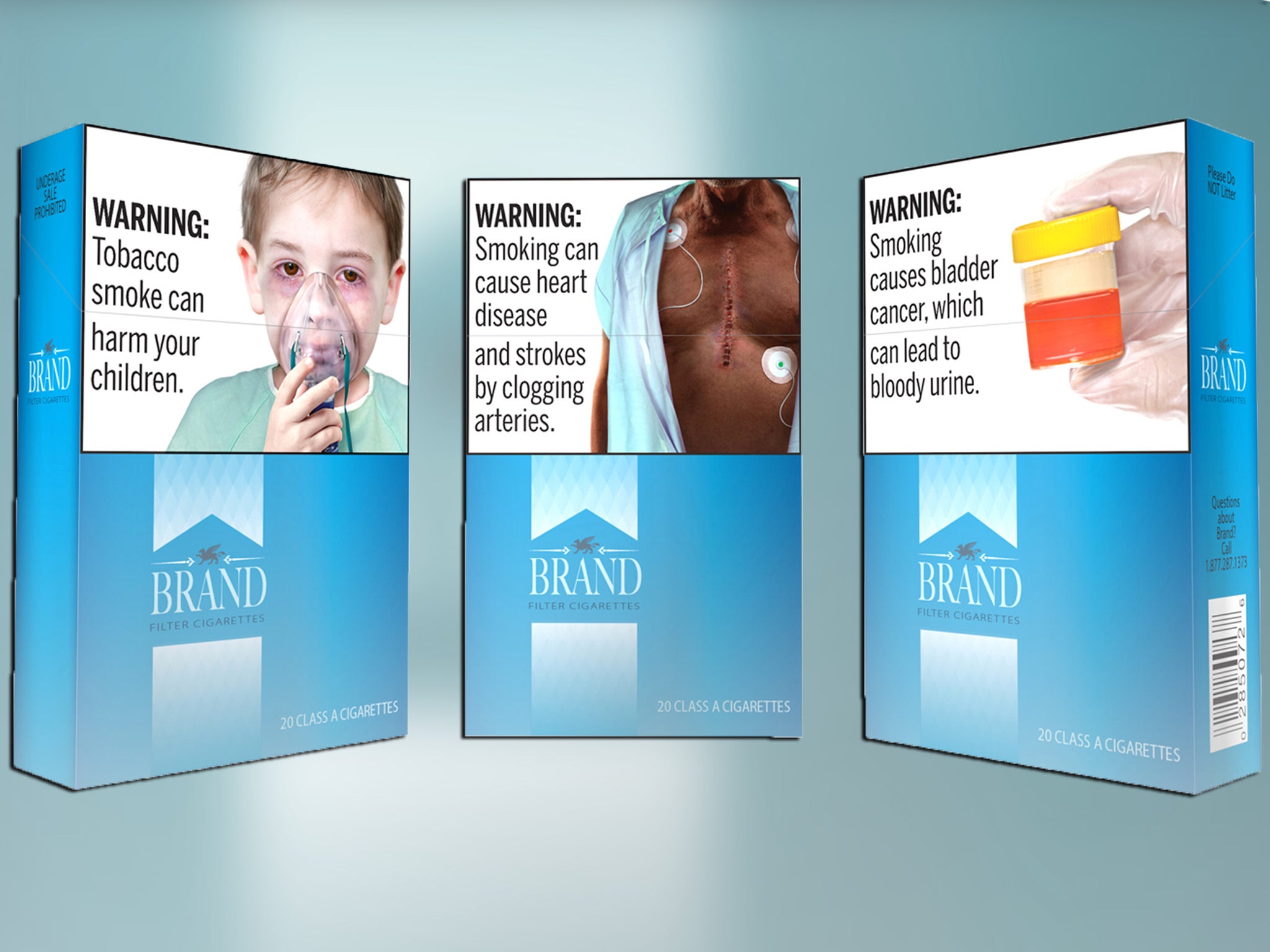FDA proposes new graphic health warnings for cigarette packets and TV adverts
US Food and Drug Administration says warnings represent ‘the most significant change to cigarette labels in more than 35 years'

Your support helps us to tell the story
From reproductive rights to climate change to Big Tech, The Independent is on the ground when the story is developing. Whether it's investigating the financials of Elon Musk's pro-Trump PAC or producing our latest documentary, 'The A Word', which shines a light on the American women fighting for reproductive rights, we know how important it is to parse out the facts from the messaging.
At such a critical moment in US history, we need reporters on the ground. Your donation allows us to keep sending journalists to speak to both sides of the story.
The Independent is trusted by Americans across the entire political spectrum. And unlike many other quality news outlets, we choose not to lock Americans out of our reporting and analysis with paywalls. We believe quality journalism should be available to everyone, paid for by those who can afford it.
Your support makes all the difference.The US Food and Drug Administration (FDA) has proposed new graphic health warnings on cigarette packets and in adverts to promote greater public understanding of the negative consequences of smoking.
The administration issued a proposed rule that requires tobacco companies to implement new text and photographic warnings.
The warnings feature colour images and statements that describe the health risks of smoking which include “smoking reduces blood flow to the limbs, which can require amputation” and “smoking causes bladder cancer, which can lead to bloody urine”.
Warnings in the US first appeared on cigarette packages in 1966 and were last updated in 1984. The FDA stated that the new proposal represents “the most significant change to cigarette labels in more than 35 years”.
There are 13 proposed warnings which feature an array of statements and images. The photos used in the warnings include one of an elderly man with cataracts, a child using an oxygen mask and a crying baby.
The statements accompanying the images include “smoking causes type 2 diabetes, which raises blood sugar” and “smoking causes head and neck cancer”.
According to the organisation, the cigarette health warnings, if approved, would cover the top 50 per cent of the area on the front and back panels of cigarette packaging. Meanwhile, they would take up at least 20 per cent of the area at the top of the cigarette adverts.
Dr Ned Sharpless, acting FDA commissioner, said in a statement: “While most people assume the public knows all they need to understand about the harms of cigarette smoking, there’s a surprising number of lesser-known risks that both youth and adult smokers and non-smokers may simply not be aware of, such as bladder cancer, diabetes and conditions that can cause blindness.
“With these new proposed cigarette health warnings, we have an enormous public health opportunity to fulfil our statutory mandate and increase the public’s understanding of the full scope of serious negative health consequences of cigarette smoking.
“Given that tobacco use is still the leading cause of preventable disease and death in the US, there’s a lot at stake to ensure the public understands these risks."
The final version of the rule is due to be issued by 15 March 2020, with warnings appearing on packaging in adverts 15 months later.
According to Action on Smoking and Health (ASH), more than 100 countries have passed legislation requiring pictorial warnings.
In the UK, “light” and “mild” descriptors have been banned since 2003, and photographic health warnings have been compulsory since October 2008, according to the organisation.
The FDA states that approximately 34.3 million adults and nearly 1.4 million youths (aged 12-17 years) currently smoke cigarettes in the US.
According to a 2016 study by researchers at Georgetown Lombardi Comprehensive Cancer Center, photographic warnings on cigarette packages could reduce smoking by five cent in the short term and 10 per cent in the long term in the US.
The study, published in the journal Tobacco Control, projected that over the next 50 years, packaging featuring photos could result in 652,800 fewer smoking-attributable deaths; 46,600 fewer cases of low birth weight; and 73,600 fewer preterm births.
“The bottom line is that requiring large pictorial warnings would help protect the public health of people in the United States,” said Dr David T Levy, a professor of oncology at the research centre.
“There is a direct association between these warnings and increased smoking cessation and reduced smoking initiation and prevalence. That would lead to significant reduction of death and morbidity, as well as medical cost.”
The NHS states that smoking increases your risk of developing more than 50 serious health conditions, and around seven out of every 10 cases of lung cancer in the UK.
Join our commenting forum
Join thought-provoking conversations, follow other Independent readers and see their replies
Comments